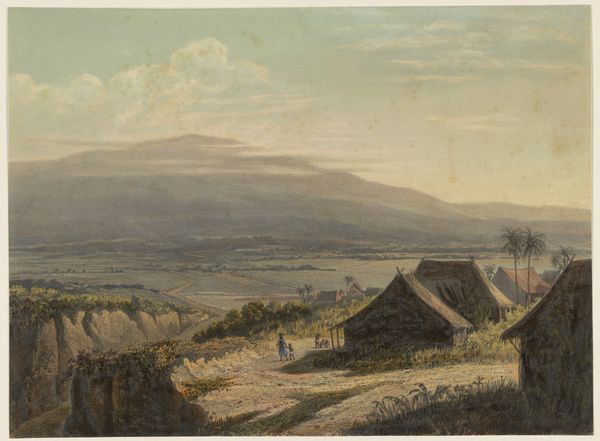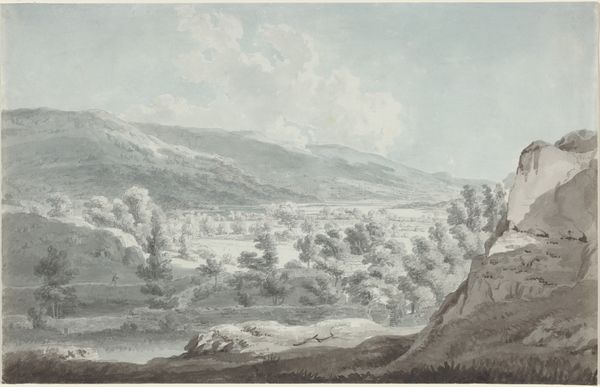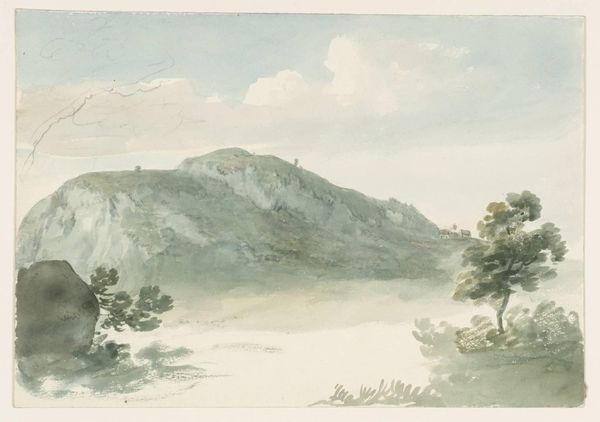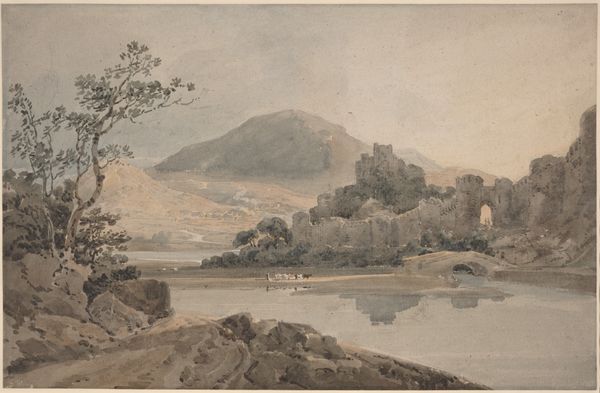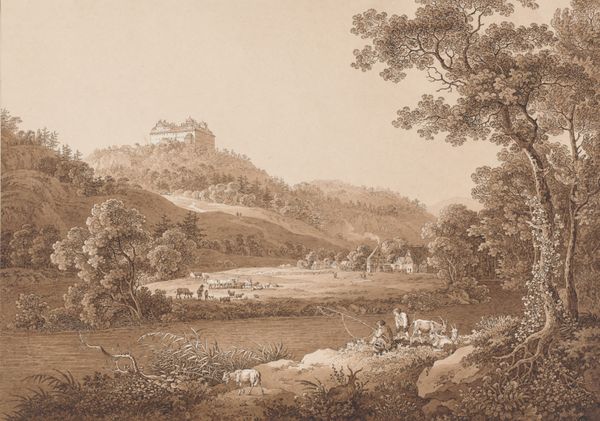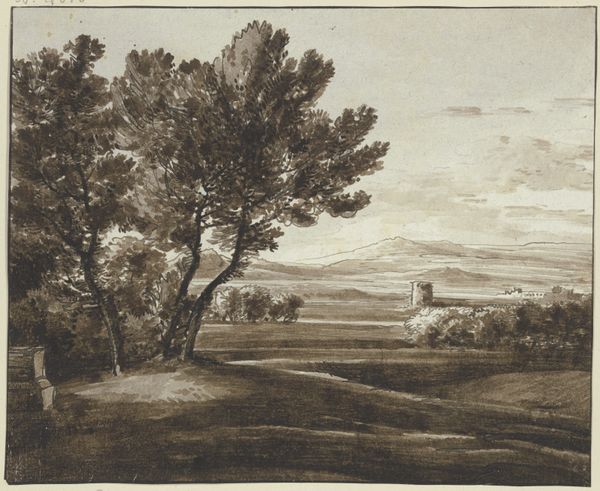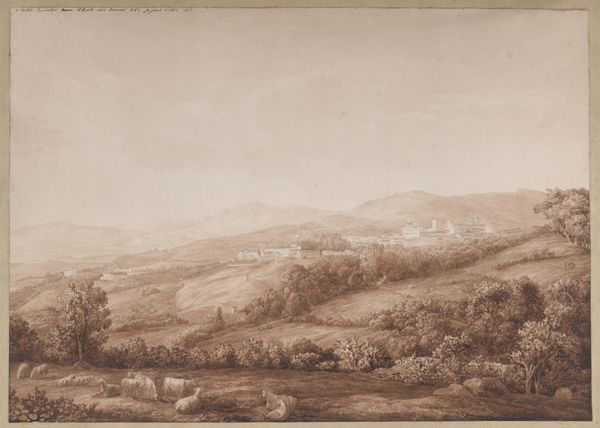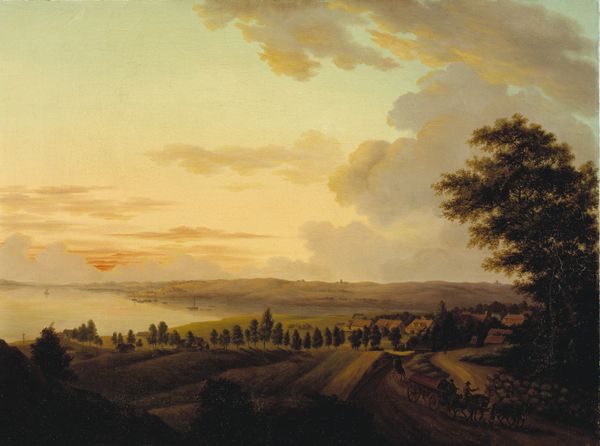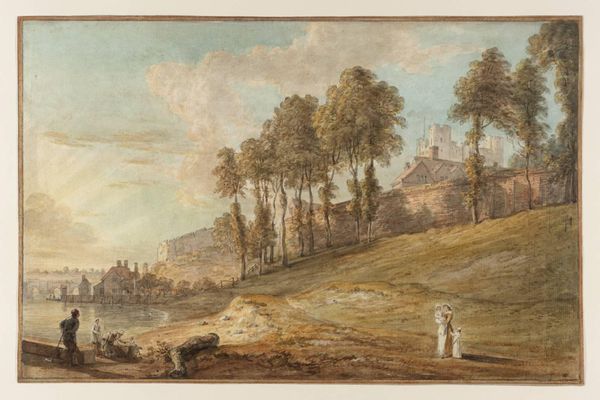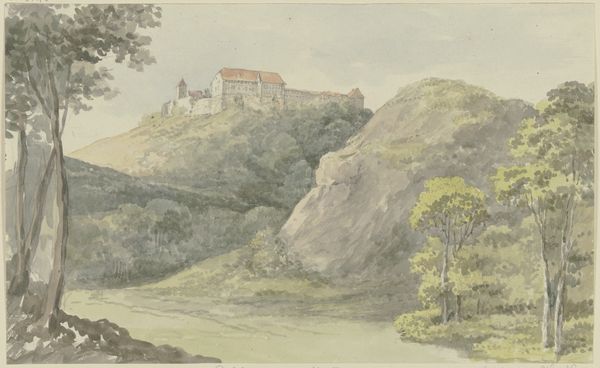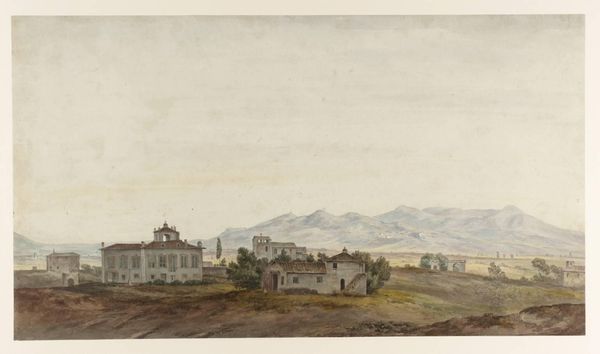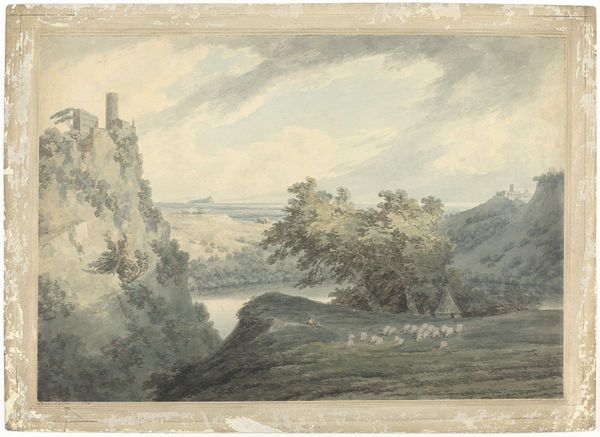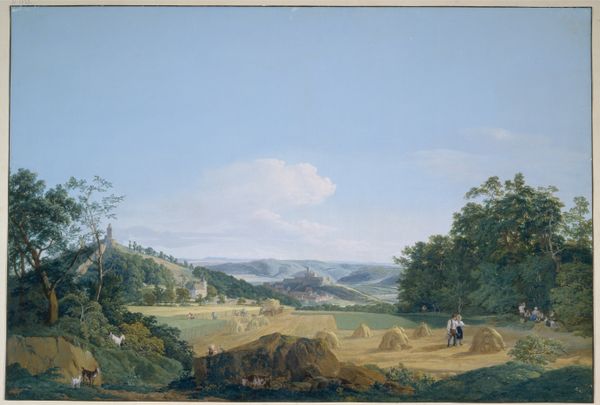
Dimensions: 285 × 425 mm
Copyright: Public Domain
Curator: Looking at Thomas Jones' "Near Tivoli," a watercolor and pencil work from 1777, I’m struck by how profoundly place is connected to power structures and individual experiences of freedom. Editor: There's such a delicate tranquility to it, almost melancholic. The muted colors, the gentle hills... It evokes a profound sense of peace. Curator: Jones' choice of the plein-air method directly reflects the social values that were emerging during this period. The experience of nature being linked to personal and national identity—it speaks volumes about the emerging consciousness of British colonialism in the late 18th century. Editor: The building in the midground particularly grabs my attention. That white, palatial-like structure… It’s suggestive of classical Roman villas and maybe a bit of Renaissance ideals. Those recurring colonnade or arch motifs really create an arcadian sensibility. The trees clustered around feel carefully planted, ordered and idealized, a visual signifier of human mastery. Curator: Indeed, you're pointing towards a powerful dialectic—the cultivated versus the ‘natural.’ How do we grapple with this Romantic pursuit of the sublime when we acknowledge that its very premise, its aesthetic pleasure, might come at the cost of exploited labor, of environmental disregard? Editor: A fascinating contradiction—a desire for unspoiled nature intertwined with visible symbols of wealth and cultivated luxury! Maybe the artist grappled with this too; look how the structure nestles somewhat humbly into the landscape, dwarfed by the immensity of that cloud. Curator: That contrast echoes in broader philosophical questions raised by his contemporaries like Mary Wollstonecraft—regarding gender roles, the ‘picturesque’ consumption of land, and their effect on the societal imagination. Jones' paintings give us visual insight into these contemporary discourses. Editor: Thank you for pointing me to those critical layers within something I initially perceived to be purely beautiful. Thinking about how we carry history into landscapes— it makes viewing all the more relevant.
Comments
No comments
Be the first to comment and join the conversation on the ultimate creative platform.
